 Products
Products
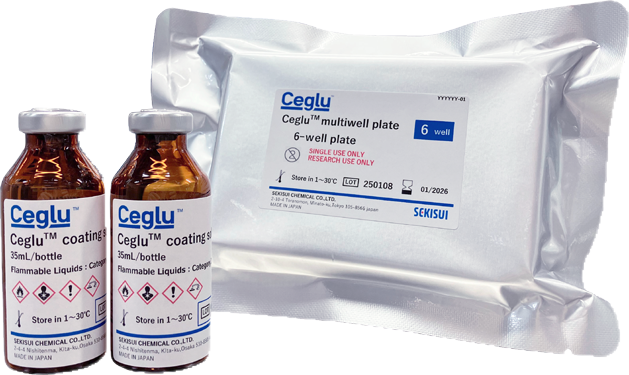
CegluTM is a chemically defined scaffold for cell culture developed by SEKISUI CHEMICAL.
It enables uniform coating on a variety of cell culture devices and substrates.
We address the scale-up challenges of culturing induced pluripotent stem cells (iPSCs),
mesenchymal stem cells (MSCs), and more,
thereby contributing to the industrial application of stem cell therapies.
User voice
CegluTM
coating solution
-
CegluTM coating solution can be coated onto 3D-printed bioreactors, and the expansion of iPSCs was successfully performed in the reactors.
Southwest Research Institute
Dr. Ling JianCegluTM coating solution can be coated onto 3D-printed bioreactors, and the expansion of iPSCs was successfully performed in the reactors.
Southwest Research Institute
Dr. Ling Jian
Dr. Ling developed a compact, 3D-printed bioreactor that automates cell production for regenerative medicine, enabling efficient, scalable growth of both suspension and adherent cells*.
When we asked him about his experience using CegluTM, he told us that CegluTM is chemically synthesized, animal-free, and well-suited for GMP compliance, offering excellent reproducibility, making it ideal for culturing adherent cells such as iPS cells.
*https://www.swri.org/newsroom/technology-today/novel-bioreactor-boosts-biopharmaceutical-production
-
Q.What kind of research are you currently conducting?
A.We are developing 3D-printed, single-use bioreactors to automate the production of cell and gene therapies, including iPS cells. Our goal is to establish a commercially viable, point-of-care manufacturing platform for clinical use.
-
Q.In what part of your research process did you use our CegluTM this time?
A.CegluTM was coated onto the bioreactor for iPS cell expansion. Neural differentiation was also performed on CegluTM-coated multiwell plates.
-
Q.How was the culture evaluation using the CegluTM-coated substrate?
A.We have successfully used CegluTM-coated substrates for both iPS cell expansion and differentiation into neural progenitor cells.
-
Q.What are the advantages of CegluTM compared to other scaffolding materials?
A.Key advantages include its chemically-defined composition, suitable for future cGMP manufacturing, and ensured reproducibility.
-
Q.What are your expectations for CegluTM in the future?
A.CegluTM is compatible not only with iPS cells but also with other adherent cells, such as MSCs and neural progenitor cells, making it versatile for various applications. Its high reproducibility makes it ideal for integration with automated systems. When combined with 3D bioreactors, it is expected to produce over 109 cells, supporting the development of cell therapies for a wide range of diseases.
-
Q.What kind of research are you currently conducting?
CegluTM
multiwell plate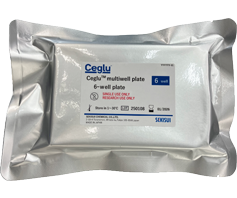
-
Besides maintenance culture, cells can differentiate into hepatocytes on CegluTM. The detachment issue of epithelial cells has also been improved.
National Center for Child Health and Development
Prof. AkutsuBesides maintenance culture, cells can differentiate into hepatocytes on CegluTM. The detachment issue of epithelial cells has also been improved.
Dr. Hidenori Akutsu, National Center for Child Health and Development

Dr. Akutsu of the National Center for Child Health and Development is working to establish a disease model system for congenital diseases of the liver. When we asked him about his experience using CegluTM, he told us that he was able to greatly reduce the amount of labor required to maintain and culture iPS cells, and that it was also very beneficial in inducing differentiation into hepatocytes.
-
Q.What process did you use CegluTM in your research?
A.We used it in two processes: one is a culture in which the undifferentiated state is maintained. The other is the differentiation process, the process of inducing differentiation of hepatocytes.
-
Q.How did you evaluate the product after using it?
A.I am highly satisfied. I would give full marks for undifferentiated maintenance culture. We also obtained the number of cells we wanted.
Induction of differentiation into hepatocytes, which is also done and easy to use. In previous systems, when cells differentiated and became epithelial cells, they detached after about 2 weeks, but CegluTM has good adhesion and can be maintained and observed for more than 3 weeks. -
Q.What are the advantages over other scaffold materials?
A.It is provided in a ready-to-use condition for culture. It has greatly reduced the amount of labor required for experiments. We don't have to do any advance preparation, and we can perform passaging at any time we want.
In addition, while the adhesion was good, it was not difficult to peel off. -
Q.What do you expect from CegluTM in the future?
A.In addition to the 6-well plate, 10cm dish plates are needed. 96-well plates would also be good to have for screening and single-cell subcloning/ sorting purposes.
It would also be nice to see the addition of scaffold materials specialized for various differentiation inductions.
-
Q.What process did you use CegluTM in your research?
-
CegluTM facilitates the maintenance culture of iPSCs and shorten the time to obtain results.
Nagoya Univ.
Dr. YamashitaCegluTM facilitates the maintenance culture of iPSCs and shorten the time to obtain results.
Dr. Daiki Yamashita,
Nagoya University.
Dr. Yamashita of Nagoya University is engaged in research on hematological malignant tumor diseases in children, utilizing iPSCs to create disease models in which mutations are introduced. When we asked Dr. Yamashita how he felt about using CegluTM, he said that he could obtain results more quickly because it reduced the time and effort required to culture iPSCs.
-
Q.What process did you use CegluTM for in your research?
A.We use it for maintenance culture in an undifferentiated state (We are also trying to induce differentiation using micropatterned plates, which are a under development product.
-
Q.How did you evaluate the product after using CegluTM?
A.I am very satisfied. I am satisfied with the number of cells obtained and the quality of the cells in terms of maintenance culture.
-
Q.How do you think CegluTM can contribute to the development of your research?
A.The system has been very helpful in greatly reducing the amount of time and effort required in our busy research activities. I believe that efficient maintenance and culture is now possible, and the time required to obtain research results for differentiation experiments will also reduced.
-
Q.What do you expect from Ceglu in the future?
A.It would be helpful if we could expand to co-culture experimental systems with other cell types, or if we come up with scaffolds that can carry the necessary elements around the cell mass that is constructed during differentiation, to reduce the process even further.
-
Q.What process did you use CegluTM for in your research?
 features
features
-
Uniform surface
Uniform culture surface with minimal lot-to-lot variation.
-
Safe & Stable
Fully chemically defined with no animal origin component.
Long-term stability at room temperature. -
Scalable(coating solution)
Applied to various cell culture substrates and devices.
-
Ready-to-use(multiwell plate)

Pre-coated plates are ready-to-use for experiments without any additional preparation.
 Robust long-term culture
Robust long-term culture
CegluTM performs equivalently to Vitronectin, maintaining both pluripotency and the undifferentiated state.
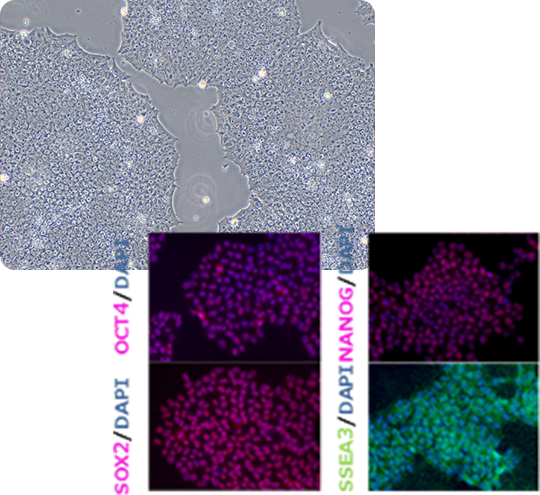
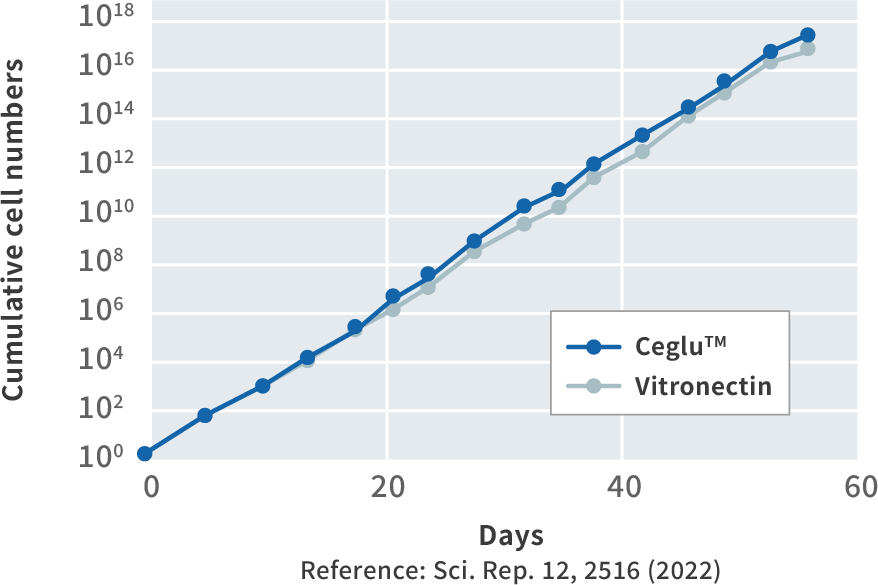
 Uniform culture surface
Uniform culture surface
The uniform culture surface of CegluTMcoated plates has been confirmed through atomic force microscopy (AFM) observation. This ensures the stable culture of stem cells.
Surface observation by AFM
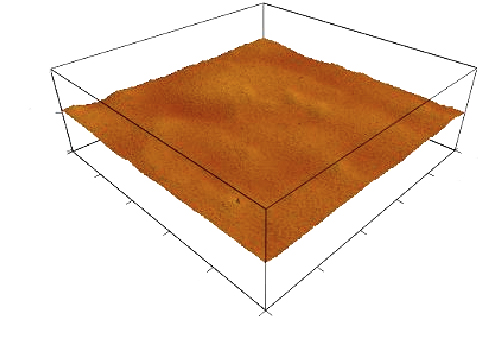 CegluTM coated surface
CegluTM coated surface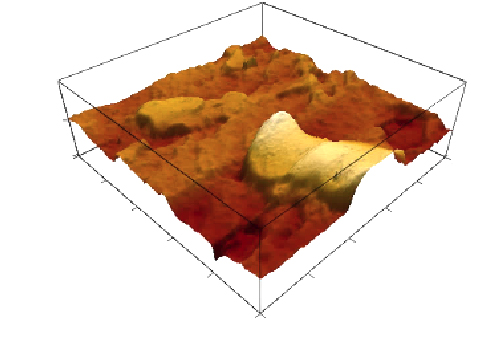 Protein scaffold coated surface
Protein scaffold coated surface
 Stable at room temperature
Stable at room temperature
CegluTM can be stored at room temperature without loss of performance for one year.
It is highly stable and ideal for long-term culture.
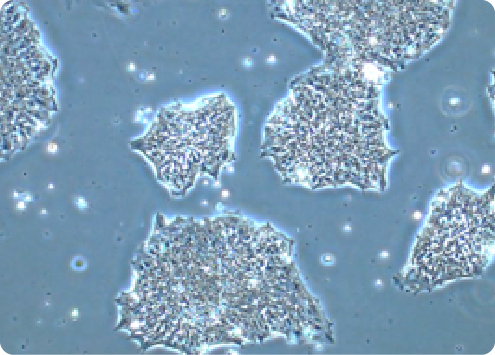 CegluTM storage stability test
CegluTM storage stability test
(Before, iPSC)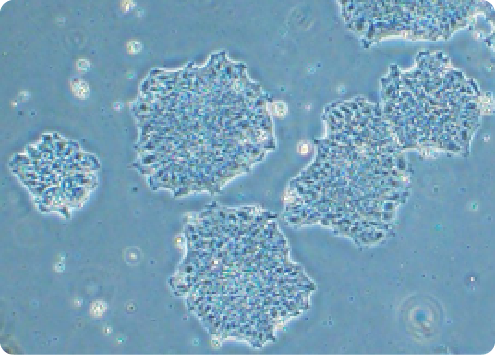 CegluTM storage stability test
CegluTM storage stability test
(1 year, iPSC)
 Applied to various substrates and devices
Applied to various substrates and devices
CegluTM can be applied to a wide range of substrates and devices. This ensures a consistent cell culture environment even when the substrate or device is changed.
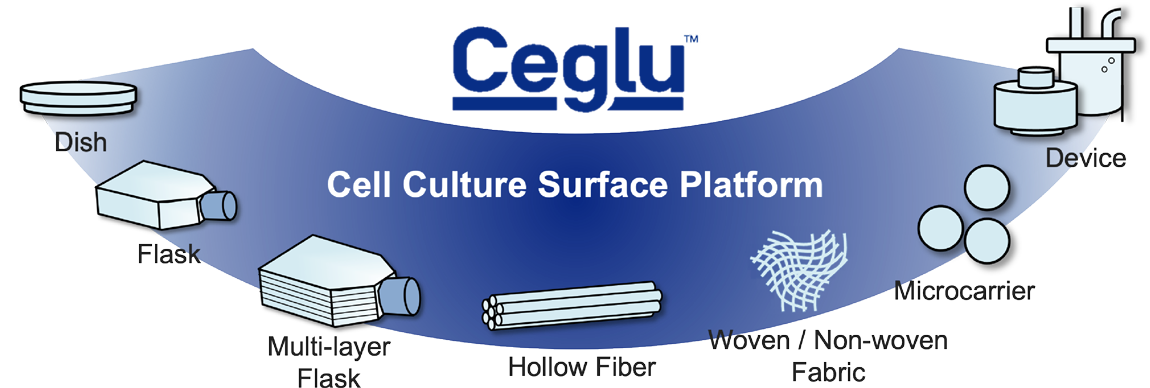
iPSCs
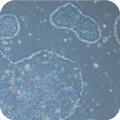 Dish
Dish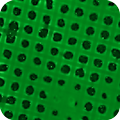 Woven Fabric
Woven Fabric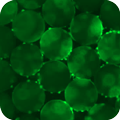 Microcarrier
Microcarrier
MSCs
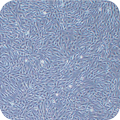 Dish
Dish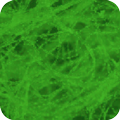 Non-woven Fabric
Non-woven Fabric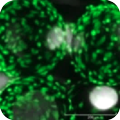 Microcarrier
Microcarrier
Examples of iPSC and MSC culture on CegluTM-coated substrates
Products
-
For Manufacturers of Cell Culture
Devices and Substrates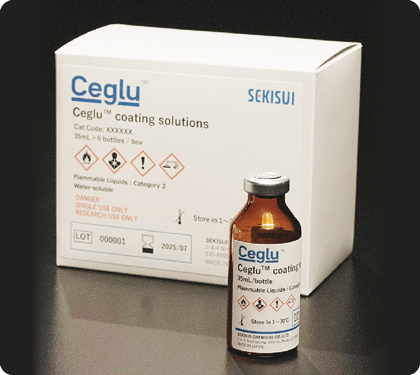
CegluTM
coating solutionCegluTM coating solution can be applied to a variety of substrates and devices. By using this product to coat substrates and devices for your products, you can provide your customers with a uniform cell culture surface for iPSCs, MSCs, and other cell cultures.
If you require the coating solution, please contact us*.
*Note that this product is for manufacturers of cell culture equipment and substrates. -
For Researchers
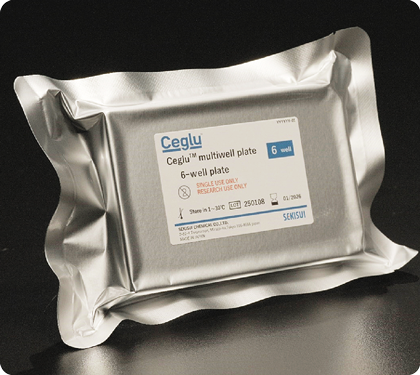
CegluTM
multiwell plateMultiwell plates pre-coated with CegluTM are sterlized and ready to use, eliminating the need for user-applied coating. This feature reduces time and labor in cell culture processes and enhances experimental reproducibility.
Resources
About CegluTM
Application note
Conference presentation
If you would like to get a poster for the conference,
please click the link below and fill out the required information.
We will then provide you with the URL for the download page.
Reference
A chemically-defined plastic scaffold for the xeno-free production of human pluripotent stem cells
Scientific Reports. 2022 Feb 15;12(1):2516.
https://doi.org/10.1038/s41598-022-06356-8
Adhesion Characteristics of Human Pancreatic Islets, Duct Epithelial Cells, and Acinar Cells to a Polymer Scaffold
Cell Transplantation. 2022 Sep;31:09636897221120500.
https://doi.org/10.1177/09636897221120500
Improved Production of Induced Pluripotent Stem Cells Using Dot Pattern Culture Plates
Tissue Engineering Part C: Methods. 2023 Sep 1;29(9):410-23.
https://doi.org/10.1089/ten.tec.2023.0068
Size control of induced pluripotent stem cells colonies in two-dimensional culture for differentiation into functional monocyte-like cells
Cytotherapy. 2023 Dec 1;25(12):1338-48.
https://doi.org/10.1016/j.jcyt.2023.08.002
FAQ
Basic information about CegluTM
-
Q1.Are animal-origin components used?
A.CegluTM is chemically defined materials and NOT contains animal-origin components.
-
Q2.Can I get a Certificate of Analysis (CoA) for my product?
A.We can provide the CoA, please contact us.
-
Q3.Is there any cytotoxicity?
A.Cytotoxicity tests was conducted with reference to the US Pharmacopeia (USP87, USP88) test methods, and NO cytotoxicity have been confirmed.
-
Q4.Can I have a sample?
A.We can provide the sample. Please contact us.
Cell culture with CegluTM
-
Q1.What cell types have you cultured?
A.We have experiences culturing iPSCs, ESCs, MSCs, fibroblasts and various differentiated cells, and more.
-
Q2.What differentiation experience do you have?
A.We have experiences with differentiation of iPSCs into trichoderm, hematopoietic stem cells, monocytes, hepatocytes, neurons (dopaminergic), glial cells (astrocytes) and retinal pigment cells, etc.
-
Q3.How long is long-term culture possible?
A.We have confirmed that iPSCs can be cultured for 10 passages (50-60 days) while maintaining their undifferentiated state.
For more details, please refer to the following paper.
Scientific Reports. 2022 Feb 15;12(1):2516.
https://doi.org/10.1038/s41598-022-06356-8 -
Q4.What cell culture media can be used?
A.We have extensive experiences culturing iPS cells in various media, including StemFit® AK02N, StemFit® AK03N, StemFlexTM, TeSRTM-E8TM, mTeSRTM1, Essential 8TM and others.
-
Q5.What cell dissociation reagents can be used?
A.Enzyme-based and chelating reagents can be used for cell dissociation.
